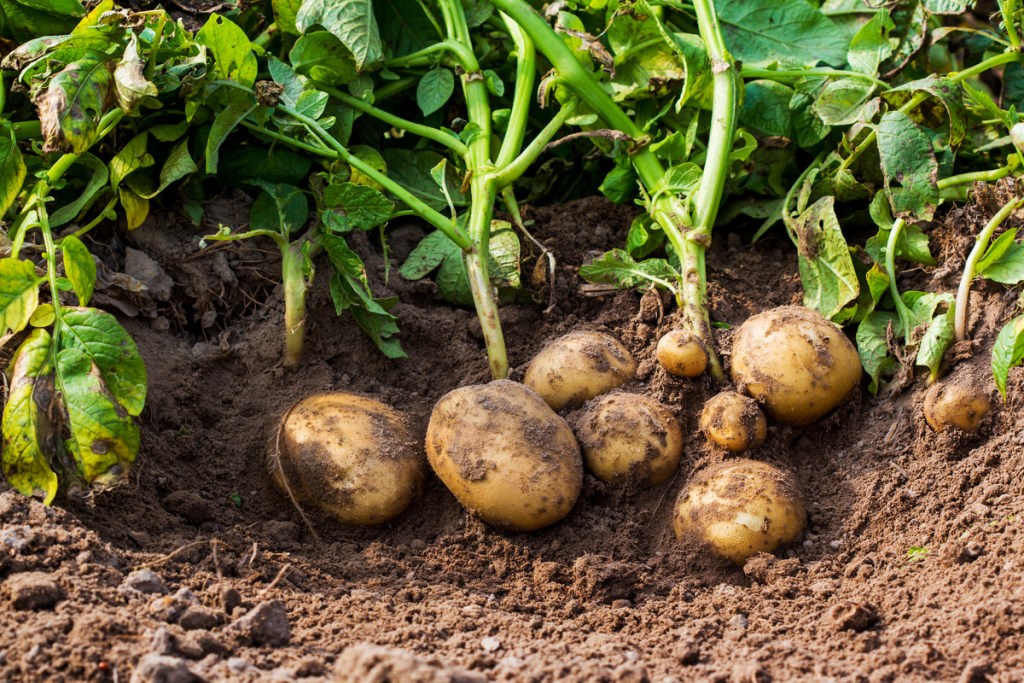You probably love potatoes as a staple in your diet, but did you know growing them on your own is actually very easy? If you’re lacking space for growing potatoes, or if your garden is already full of other plants, flowers, and veggies, you may wonder if you can still grow potatoes.
With vertical gardening, you can actually grow the same amount of potatoes more easily and with the smaller space of a vertical garden. Here’s a simple guide to vertically growing potatoes in a way that works for you and your space.
How much space do you need to grow potatoes?
Potatoes don’t need much space horizontally to grow; a plot of 1 square foot is enough for a single potato plant. Just keep in mind that more plants mean more room needed, and this means more potatoes to harvest. With 5 square feet, you have a great middle ground, especially if you’re looking to harvest enough potatoes to feed a family.
Vertically, your garden will likely be 1 to 3 feet tall. The height of your garden can vary, as it depends on how tall your potato plants will grow. You may be able to coax them taller, depending on the variety and growing conditions. If your potato plants are stubborn, or if conditions aren’t quite right, you may end up with a shorter garden.
Growing your potatoes
Measure out your base and lay your seed potatoes on the surface of the ground, spaced 4 to 6 inches apart. Don’t bury them, because you want your bottom layer to be above ground to make harvesting easier. Instead, layer a few inches of soil on top of your seed potatoes. Once the vines have grown about 2 inches, layer more soil onto them. You can also add a layer of leaves or straw instead of soil. Continue this process until your plants are between 2 and 3 feet tall.
Stop layering at this point and let the plants develop leaves. If you can see the tops of the tubers, cover them with soil. When exposed to sunlight, potato tubers can burn or turn green and produce a toxic chemical called solanine.

Setting up your tower
Vertical potato gardens resemble a tower, with the potatoes in the center surrounded by walls. There are many ways to craft your tower, with some choosing to build the walls up as the plants grow and others deciding to build the walls first. Putting the walls up first can save you some time overall and is easier to set up, but can result in a tower that’s too large or too small. Building the walls as you go takes a little more time and effort, but your tower will be the right size every time.
A basic tower is made from wood boards, roughly the width of each layer, nailed together to form a box. The potatoes on the lower levels will be ready for harvest slightly sooner than the potatoes on higher levels. So, when it comes time to harvest, remove the bottom board on one side of the layer you’ll be harvesting.
You can make your tower in any way you’d like, based on what you have available. For example, a 5-gallon bucket with the bottom cut out of it, an old laundry basket, or even chicken wire on wooden posts will do. Having one side that’s removable or made of wire can also make watering your tower much easier.

What kinds of potatoes grow in towers?
When building a vertical garden to grow potatoes, you want to be sure you pick potatoes that are long-season, or slow-growing varieties, known as indeterminate potatoes. There is actually a very long list of indeterminate varieties, but here are a few samples:
- Russet Burbank
- Ranger Russet
- Century Russet
- Russet Nugget
- Alturas
- German Butterball
What are the pros and cons of growing potatoes vertically?
This method of growing potatoes is a great way to grow the same amount or even more potatoes in less space. If you have limited space, but still want a hearty harvest, this is an excellent option. It’s fairly easy to set up, and it’s easy to customize based on your needs and resources.
Harvesting potatoes is a messy process. This is true no matter what method you use. However, harvesting from a vertical garden can also be a little tricky and uncomfortable. The upper levels of your tower should be relatively easy to harvest, but the lower levels, especially the bottom level, may give you some trouble. This is especially true the first time you do it, although it does get easier with practice.
This simple method makes use of whatever extra space and supplies you have to provide you with plenty of potatoes. Whether you’re an experienced gardener looking to make use of the last corner of your garden or a beginner looking for a project that doesn’t need much space, vertical potato gardens are a fun way to grow as many potatoes as your heart desires.



